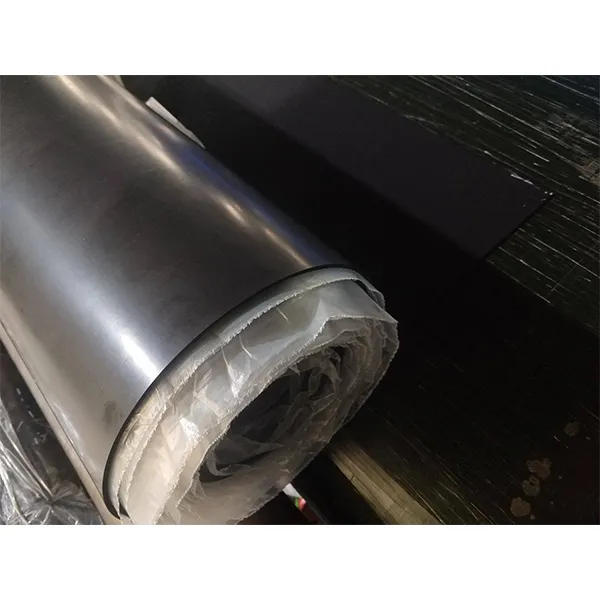Effective Weatherproofing with Screen Door Rubber Seals for Enhanced Home Comfort
The Importance of Screen Door Rubber Seals
When it comes to maintaining the comfort and efficiency of our homes, seemingly small components often play a crucial role. One such component is the rubber seal of a screen door. While it may not capture much attention at first glance, this rubber seal is vital for various reasons, including pest control, energy efficiency, and overall durability.
Functionality of Rubber Seals
Rubber seals are designed to fit snugly around the edges of screen doors, ensuring a tight closure when the door is shut. This functional design prevents drafts from entering or escaping the home, which is particularly important in climates with extreme temperatures. A good seal will help maintain indoor temperatures, reducing reliance on heating and cooling systems, thereby leading to lower energy bills.
Moreover, these seals provide a barrier against insects and pests. Insects such as flies, mosquitoes, and spiders can easily invade homes through even the smallest gaps around doors. A properly fitted rubber seal ensures that these pests are kept at bay, allowing homeowners to enjoy fresh air without the annoyance of unwelcome visitors.
Types of Rubber Seals
Rubber seals come in various types, materials, and designs to accommodate different screen door configurations and personal preferences. Common materials include EPDM (Ethylene Propylene Diene Monomer), vinyl, and silicone, each boasting unique properties suited for specific applications.
1. EPDM Seals Known for their durability and excellent weather resistance, EPDM rubber seals are suitable for outdoor use. They can withstand extreme temperatures and are resistant to UV rays and ozone degradation.
2. Vinyl Seals These are often more cost-effective and flexible. Vinyl rubber seals work well in light-duty applications and are easy to install, making them a popular choice for DIY enthusiasts.
screen door rubber seal

3. Silicone Seals For those needing a more robust solution, silicone seals provide unmatched flexibility and resilience. They can fit irregular gaps better than other materials and also resist mold and mildew growth.
Installation and Maintenance
Installing a screen door rubber seal is relatively straightforward, which makes it a great DIY project for homeowners. First, it's important to clean the door frame thoroughly to ensure proper adhesion. Once the area is prepped, the rubber seal can be cut to fit the length of the door, and most seals come with peel-and-stick adhesive for easy application.
Maintenance of rubber seals is minimal. Regular checks for wear and tear are advisable, as exposure to the elements can cause the seals to crack or lose their elasticity over time. If any damage is detected, replacing the seal can help maintain the door's effectiveness and prolong its lifespan.
Benefits of Quality Rubber Seals
Investing in high-quality rubber seals for your screen doors pays off in many ways. Beyond improved energy efficiency and pest resistance, a well-sealed door reduces noise pollution, providing a peaceful home environment. Additionally, the aesthetic appearance of a door can be enhanced with a clean and tight seal, offering a polished finish.
Furthermore, a durable rubber seal enhances the overall lifespan of the screen door. By preventing moisture from penetrating the door frame, it helps avoid the risk of rot and decay, particularly in wooden doors. This longevity translates to lower replacement costs and contributes to a more sustainable lifestyle.
Conclusion
In summary, the rubber seal of a screen door is an often-overlooked yet essential component in maintaining a comfortable and efficient home environment. Whether you are looking to keep pests out, save on energy bills, or enhance the durability of your screen door, investing in quality rubber seals is a wise decision. Simple to install and maintain, these seals play a significant role in creating a welcoming and secure space for you and your family. By understanding the importance of these seals, homeowners can take proactive steps towards improving their indoor living conditions while promoting long-term sustainability.
-
Under Door Draught Stopper: Essential ProtectionNewsJul.31,2025
-
Garage Door Seal and Weatherstrips for ProtectionNewsJul.31,2025
-
Edge Banding Tape for Perfect EdgesNewsJul.31,2025
-
Table Corner Guards and Wall Corner ProtectorsNewsJul.31,2025
-
Stair Nose Edging Trim and Tile Stair SolutionsNewsJul.31,2025
-
Truck Bed Rubber Mats for Pickup BedsNewsJul.31,2025
-
Window Weather Stripping for Noise ReductionNewsJul.29,2025